In the southernmost part of mainland Spain lies the Autonomous Community of Andalusia. This region, the last stronghold of the Moors in Spain, is known for its vibrant culture, cultural sights, and unique geography, which is unlike any other on the continent of Europe. In this article, I will explore both the sights and culture of Andalusia along with explaining the Autonomous Community generally.
Overview of Andalusia
First, A little bit about the Autonomous Community. Andalusia is split up into eight different provinces (Almeria, Cadiz, Cordoba, Granada, Huelva, Jaen, Malaga, and Seville), with the capital of the region in the city of Seville and the highest court located in the city of Granada. The Autonomous Community has a surface area of about 90,000 square kilometers which is about 17.3% of Spain’s total area, making the region comparable in size to many smaller European countries. The region borders Portugal to the west and shares a tiny 0.75-mile border to the south with the British overseas territory of Gibraltar. Andalusia also borders the Spanish regions of Extremadura, Castilla y Manche, and Mercia, all of which are broadly to the north of Andalusia. Andalusia is a very mountainous region with two main mountain ranges: Sierra Morena and the Baetic. Around 8.5 million people live in Andalusia, with most people living in the cities or along the coast, the largest city being Seville. Over half of the population lives in the 28 cities with over 50,000 people in them. Andalusia has a GDP of about 160.6 billion euros (2018) and GDP per capita of about 20,000 euros, which is about 13.4% of Spain’s economic output. The main industries of the region include agriculture, forestry, mining, and tourism. In fact, Andalusia has the second highest number of tourists per any region of Spain only behind the region of Catalonia. The predominant language in the region is Spanish much like the rest of Spain.
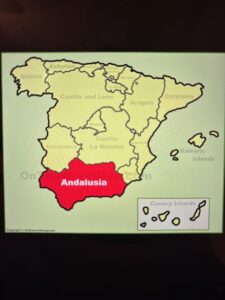
Seville
One of the most famous and culturally important cities in all of Andalusia would be its capital, the city of Seville. Located not too far from the coast, Seville has a population of around 700,000 people. Seville is known for a lot of things, chief among them would be its many famous sights. In the heart of the city lies the massive Cathedral of Seville, a gothic cathedral and the center of the diocese. The cathedral is known for its massive bell tower, beautiful interior, and housing the body of Christopher Columbus (at least according to the cathedral). Another famous place in Seville is the Real Alcazar, an old palace used by the monarchs of Spain. The structure is a UNESCO World Heritage Site that blends both Moorish architectural styles with more European styles. The city also contains the Plaza de España, a massive semi-circular building built in 1928 as part of the Ibero-American Exposition. The building is famous for its striking appearance and has been used as a backdrop for many popular movies. Seville is also known for its Setas de Sevilla, a massive modern art installation that consists of 6 mushroom-shaped canopies that rise above the city and give great views of Seville. The structure, designed by German architect Mayer and completed in 2011, is supposed to be inspired by the many famous buildings in Seville, like the Seville Cathedral.
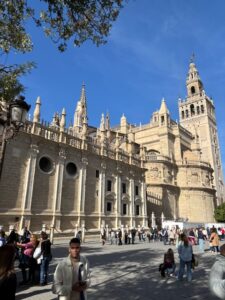
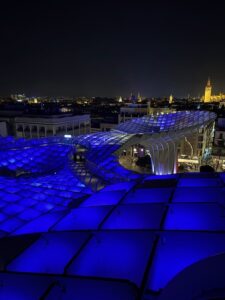
Costa de Sol and Malaga
South of Seville lies the Mediterranean coast of Spain and the city of Malaga, the region’s second largest city. This coast is known for its large mansions and beautiful views of the ocean and of the rugged coastline. The city of Malaga is known as the birthplace of Pablo Picasso, whose art transformed the world and the artistic community. As a result, the city is full of Picasso’s work, which one can see at the city’s Picasso Museum, a truly wonderful exhibition of the artist’s life and work. Malaga also has a beautiful cathedral which rises above most of the surrounding buildings. The cathedral was built between 1528-1782 in baroque and renaissance styles on top of older Moorish ruins.
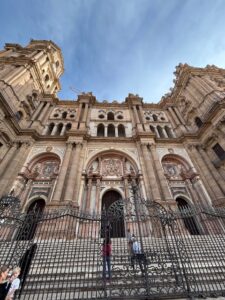
Granada
North of Malaga lies the famous city of Granada (which has about 300,000 people), known for its grand and iconic Alhambra Palace. The Alhambra Palace is a massive sprawling castle on the side of a hill, built up both by Moors and later Christian rulers. The Palace has many beautiful gardens and buildings with great views of the city of Granada below. The Palace also intricately utilizes water throughout the buildings to show the wealth of the rulers who were able to control water. Besides the Alhambra Palace, the city is also known for its cathedral, the Cathedral of Granada. The Cathedral took about 180 years to build starting in the early 1500s and was built on top of an old Moorish mosque. The building is built in a Spanish Renaissance style and has a beautiful interior with ornate organs and many paintings.
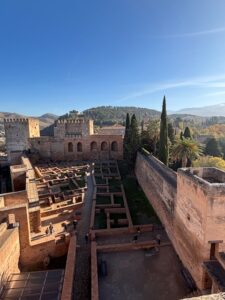
Cordoba
Just north of Granada is the city of Cordoba, the third largest city in the region with almost 400,000 people. Cordoba is known for the famous Mosque-Cathedral of Cordoba located in the center of the city. The Mosque-Cathedral is a massive square structure that was originally a mosque, but after the reconquest of the city, became a cathedral. The structure is best known for its endless striped arches, which alternate with red and white marble and its blend of Islamic and Christian architectural styles. Like many of the other cities in Spain, in Cordoba, one can find a Plaza de Torres (a bull-fighting ring) a cultural tradition throughout Spain, though bullfighting is highly controversial. Cordoba’s main ring is fairly recent, being built in 1965 and has a seating capacity of about 14,000 people.
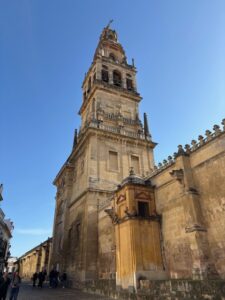
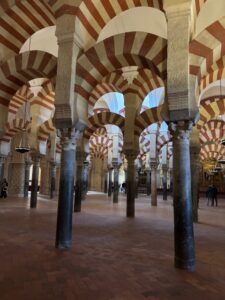
Flamenco Dancing
Andalusia is also the birthplace of Flamenco dancing, a distinctive style of dancing created by the Roma communities of Southern Spain. Flamenco is known for its fast leg and arm movements accompanied by a distinctive type of singing and a fast Spanish guitar. The dance is an important cultural tradition of the region, and the dance is famous all over the world.
Natural Sights of Andalusia
Apart from its famous cities and cultural traditions, Andalusia has many famous natural wonders. Andalusia has a very diverse climate and many unique ecosystems with nearly 20% of the region a part of a protected area of nature. Andalusia is home to the hottest and driest climates in all of Spain, so it is unsurprising that one can find the Tabernas Desert here. The Tabernas is the continent of Europe’s only desert. The region also has part of the famous Sierra Nevada Mountain range (not the one in California). Andalusia is home to many national parks like the Sierra Nevada National Park and the Sierra de Grazalema National Park. Due to its very mountainous geography, the Autonomous Community is home to Europe’s southernmost ski resort and some of the mountains in Andalusia remain snow-covered all year-round. The region is also home to the tallest peaks on all of the Iberian Peninsula. Apart from the mountains, the Costa del Sol, the part of the region that borders the Mediterranean, is known for its wonderful views and clear water.
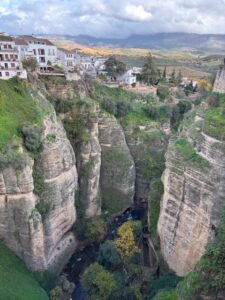
Conclusion
Overall, Andalusia is an amazing region of Spain, very rich in culture and diverse landscapes and sights. From oceans to mountains, deserts to forests, large cities to sprawling countryside, the Autonomous community has it all. With so many interesting things to see and do, it is no wonder that the region is one of the most visited in all of Spain.
Tune into The Roundup for more international travel reviews!
